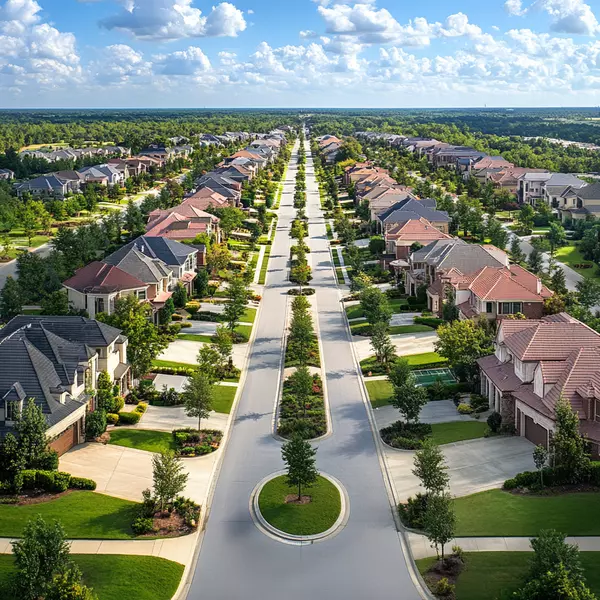Why Walkability is Driving Real Estate Demand in New Jersey in 2024
As lifestyle preferences evolve, more homebuyers and renters in New Jersey are prioritizing walkability when choosing where to live. Walkable communities, with easy access to shops, restaurants, parks, and public transportation, offer convenience and a better quality of life. This growing demand for walkable neighborhoods is shaping real estate trends across the state, attracting buyers, increasing property values, and creating unique investment opportunities. Here’s how walkability is driving New Jersey’s real estate market in 2024.
1. What is Walkability, and Why Does It Matter?
Walkability refers to how easily residents can access daily amenities on foot. Walkable neighborhoods are designed for convenience and accessibility, offering benefits such as:
- Healthier Lifestyle: Walking more promotes physical health and reduces reliance on cars.
- Reduced Transportation Costs: Walkable communities often have lower transportation costs since residents rely less on driving.
- Stronger Sense of Community: Walkable areas tend to have more social interaction, creating vibrant, close-knit communities.
- Environmental Benefits: Less driving means fewer carbon emissions, making walkable communities eco-friendly.
For many buyers, walkability is a top priority, particularly among millennials, empty nesters, and professionals.
2. Top Walkable Towns in New Jersey
Several towns in New Jersey are recognized for their walkability, offering a mix of urban and suburban charm. These include:
-
Hoboken
Known for its lively atmosphere, waterfront parks, and proximity to New York City, Hoboken ranks among the most walkable towns in NJ.
Walkable Features: Endless dining options, retail shops, and access to the PATH train.
-
Montclair
A blend of historic charm and modern convenience, Montclair offers residents walkable downtown areas with cultural attractions.
Walkable Features: Art galleries, theaters, boutique stores, and public transportation.
-
Jersey City (Downtown)
Jersey City’s downtown area is a hub of walkable living, with luxury apartments, restaurants, and access to the waterfront.
Walkable Features: Public transit hubs, nightlife, and a growing business district.
-
Red Bank
A cultural hotspot with a thriving arts scene, Red Bank boasts a highly walkable downtown area.
Walkable Features: Theaters, restaurants, boutiques, and riverside parks.
-
Princeton
With a beautiful campus and historic architecture, Princeton offers a walkable lifestyle with plenty of green spaces.
Walkable Features: University amenities, cafes, and local shops.
3. How Walkability Impacts Property Values
Walkable neighborhoods tend to command higher property values due to their desirability. Key reasons include:
- Increased Demand: Buyers and renters are willing to pay a premium for the convenience of being able to walk to amenities.
- Higher Rental Yields: Investors in walkable communities often enjoy better rental income due to strong tenant demand.
- Long-Term Stability: Walkable neighborhoods are less susceptible to market fluctuations, maintaining consistent demand over time.
In fact, studies show that homes in highly walkable areas can sell for 10-20% more than comparable properties in less walkable locations.
4. Walkability and Sustainable Development
The push for walkable communities aligns with broader trends in sustainable development. Towns in New Jersey are investing in:
- Mixed-Use Developments: Blending residential, commercial, and recreational spaces to create vibrant, self-sustaining neighborhoods.
- Public Transit Infrastructure: Enhancing access to trains, buses, and bike-sharing programs to reduce car dependency.
- Pedestrian-Friendly Streets: Expanding sidewalks, adding pedestrian crossings, and improving street lighting to make walking safer and more enjoyable.
These initiatives not only improve the quality of life but also boost the attractiveness of real estate in these areas.
5. Opportunities for Investors
Walkable neighborhoods present unique opportunities for real estate investors:
- Mixed-Use Properties: Investing in properties that combine residential units with commercial spaces can yield high returns.
- Short-Term Rentals: Walkable towns with tourist appeal, such as Red Bank and Princeton, are ideal for vacation rentals.
- Retail Spaces: With increased foot traffic, retail properties in walkable areas can generate strong rental income.
Investors who focus on walkable communities can benefit from consistent demand and long-term property appreciation.
6. Challenges and Considerations
While walkable neighborhoods are highly desirable, they also come with certain challenges:
- Higher Initial Costs: Properties in walkable areas tend to have a higher purchase price.
- Limited Inventory: Walkable towns often have lower inventory, making it more competitive for buyers.
- Parking Constraints: Some walkable neighborhoods have limited parking options, which can be a drawback for car owners.
Buyers and investors should weigh these factors carefully and work with experienced real estate professionals to find the right property.
Final Thoughts: The Growing Demand for Walkable Living in NJ
Walkability is no longer just a nice-to-have feature—it’s a key driver of real estate demand in New Jersey. From vibrant urban centers to charming suburban towns, walkable communities offer a lifestyle that appeals to a broad range of buyers and renters. As towns continue to invest in pedestrian-friendly infrastructure, this trend is only expected to grow.
If you’re interested in buying, selling, or investing in properties within New Jersey’s most walkable neighborhoods, contact us today for expert guidance and access to exclusive listings!










